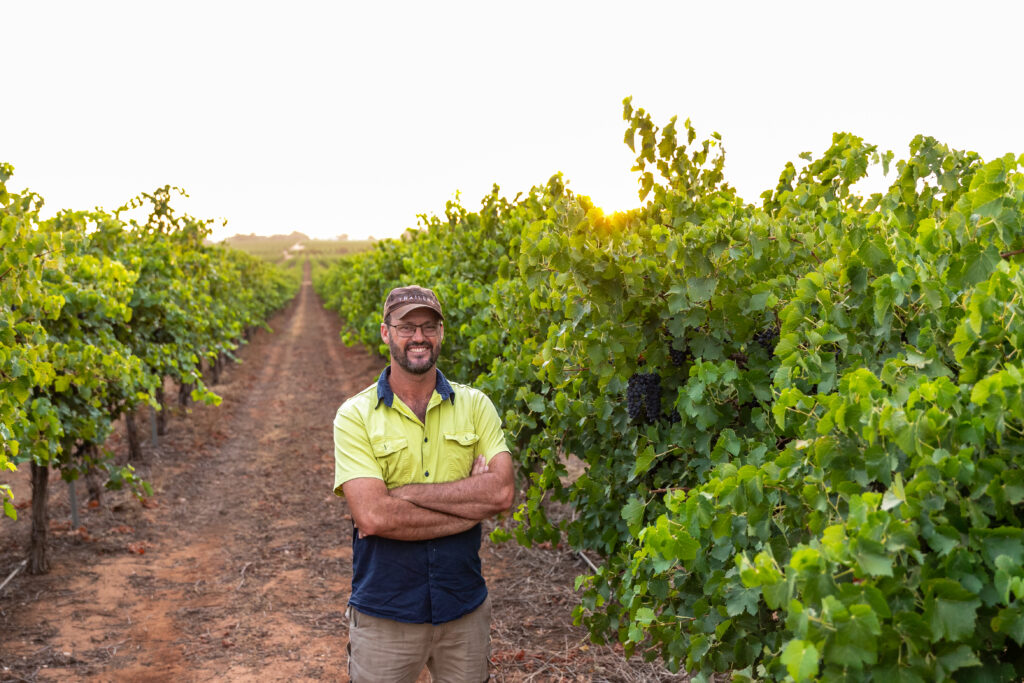Riverland vineyard owner Darren Kennedy ranked his exposure to biosecurity risk at four out of five in Vinehealth Australia’s 2021 Vineyard Owner Survey, with five being very exposed.
Darren would like to undertake more farm-gate hygiene activities to protect his 52 hectares of winegrape and dried grape vines in the Glossop and Loveday sub-regions from pest, disease and weed threats, but says lack of time and the cost associated with key activities are barriers.
“I’ve always done the basics, like buying my planting material from reputable nurseries, inspecting my vines for any issues and only using machinery in my vineyard that doesn’t go out of the region, but I know I could do more,” Darren said.
“Fencing is a good example. I know that would keep people out of my vineyard but fencing 52 hectares of vines is expensive. And boundary fences are too restrictive on my daily work. We need tractors to get around end posts and fences would be in the way.”
While Darren likes the idea of setting up a visitor register and requiring people to sign in on arrival to his property, he hasn’t found a system that works for him.
“And I don’t want to introduce restrictions that will only affect me and my workers,” he said.
For smaller growers to adopt farm-gate hygiene, Darren said measures needed to be practical and cost effective.
He would also like to see more public education about biosecurity, particularly the need to respect farm spaces.
“The ABC has covered the damage that’s been done to canola and sunflower crops by tourists wanting to get a photo. Most people don’t give two thoughts about the crops they could be damaging,” he said.
“People understand it’s not kosher to grab an apple from a farmer’s apple tree, or grab grapes off the table grape bunches in someone’s vineyard – that’s stealing – but they wouldn’t think about the risk of tracking in a new pest or weed when they wander in to take a photo. That’s just as bad.”
Darren plans to use phylloxera-tolerant rootstocks for any new vine plantings and said this was important for future-proofing his vineyard.
“Growers need to understand the pest and production challenges they have now and the risks on the horizon. If you’re not looking into ways of mitigating those risks when you’re planting new vines, you’re a bit silly I think,” he said.
